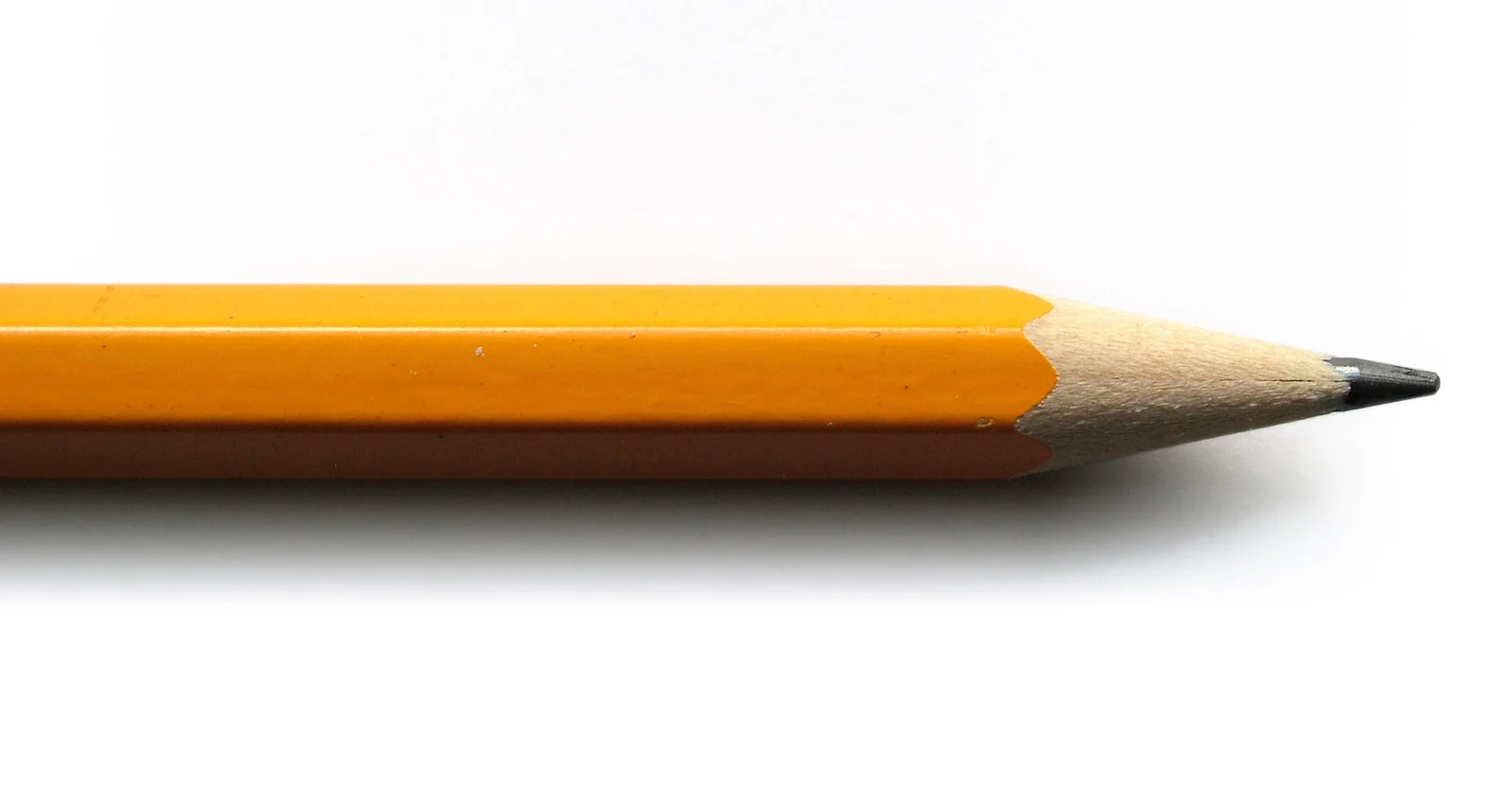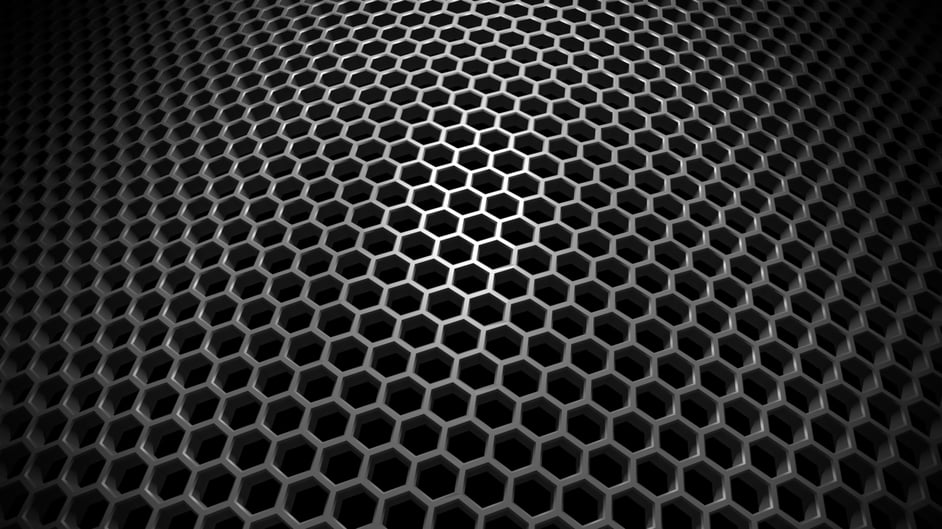
At DexMat, our focus is on producing high-quality fibers and films from carbon nanotubes (CNTs). CNTs are useful because their molecular structure grants them low density, high strength, and useful electronic properties (either conducting or semiconducting, depending on the chiral structure of the molecule). There is, of course another material with a very similar molecular structure which has garnered a lot of attention in materials science and engineering: graphene.
Like CNTs, graphene possesses outstanding properties on the scale of a single molecule; however, also like CNTs, graphene presents a challenge for materials scientists seeking to assemble it into a really optimal structure. In this post, we will discuss the basic similarities and differences between these two molecular forms of carbon and discuss how the methods that have been used to make high-performance CNT fibers have also been applied to make graphene fibers.
Molecular Similarity
When considered on the sub-nanometer scale, CNTs and graphene are almost identical: both are made up purely of carbon atoms, and in both cases those atoms are connected in a continuous 2-dimensional sheet by the same kinds of carbon-carbon bonds, called sp2-hybridized bonds. Every carbon atom is linked to three neighbors within the same plane with a single-electron bond, leading to the hexagonal grid pattern that is often seen in artistic depictions of graphene. This is a strong covalent bond, and the arrangement of the atoms into an interconnected sheet means that any force on the molecules can be distributed across many such bonds rather than concentrated on a single link.

The sp2-hybridized bonds also contribute to the electrical properties of graphene and CNTs, because each carbon atom has one of its four valence electrons un-paired and available for use as a mobile charge carrier. The electronic structure of perfectly planar graphene is that of a semimetal (that is, it is a material just on the edge between being a metal and a semiconductor) with good electrical conductivity at room temperature. In CNTs, the interconnected sheet of carbon atoms is not flat, but rather curved to form the wall of the cylindrical molecule; this bending creates a distortion in the electronic structure that causes CNTs to behave either as semiconductors or as metals. For this reason, solid CNT materials that are made up of a collection of molecular species can attain higher electrical conductivity when they are doped with some other material to increase the conductivity of the semiconducting species.
If one mentally 'zooms out' and considers the structure on the scale of the entire molecule, one can see that both graphene and CNTs lend themselves to the creation of extremely strong yet flexible structures because of their high aspect ratios. Graphene is extremely tough and unyielding to forces within the 2-dimensional plane of the carbon bonds, but it is incredibly thin (just one atom thick!), so it can be folded or rolled up very easily. CNTs are extremely strong in a single dimension, and while their cylindrical structure grants them quite a bit more stiffness than graphene, single-walled or few-walled CNTs are still quite flexible; this is especially true since their atom-thick walls can buckle and fold without breaking, creating a very flexible hinge point in the molecule (picture a bend in a drinking straw).
CNT Fibers vs. Graphene Fibers
Both CNTs and graphene are attractive raw materials for the creation of fibers that are conductive, strong, and flexible, and the effort to develop and improve methods of making fibers out of these materials have proceeded in parallel for the last decade. To date, CNT fibers have achieved better maximum tensile strength, while graphene fibers have achieved better tensile modulus and thermal conductivity; in terms of electrical conductivity, wet-spun CNT fiber out-performs most graphene fiber, although with added dopants the conductivity of graphene fiber can be higher.
Graphene has one major advantage that CNTs do not, and this advantage has motivated the development of graphene fibers as a possible alternative for lightweight, flexible conductive fiber: the cost of the raw material. High-quality CNTs remain expensive to produce, and this material cost makes it more difficult for CNT fibers to compete with metal wire alternatives on price. On the other hand, many routes for creating graphene fibers start with inexpensive graphite as a raw material.
Wet-spun CNT fibers such as Galvorn achieve good material properties by achieving good alignment and packing of the CNTs in the fiber. Several aspects of the solution-based fiber spinning process help towards this goal. First, it is critical to disperse the CNTs in a solvent at a high enough concentration that they form a liquid crystal phase, grouping themselves into domains in which they are already aligned with their nearest neighbors. During the spinning process this solution experiences shear force as it is extruded through a thin channel into a coagulation bath and elongational stretching as it is pulled through the bath, both of which promote overall alignment of the liquid crystal CNTs down axis of the solidifying fiber.
A similar technique can be used to make well-aligned graphene fibers, but there are additional challenges, the most important of which is the extreme difficulty of mixing large flakes of graphene into a solution in the first place. CNTs are difficult to disperse in solvents because of their long surfaces of contact, which lead to large attractive van der Waals forces. The same attractive forces keep the smooth, parallel graphene layers in a graphite crystal stuck together, but in the case of graphite the contacting surface areas are much larger than they are in a CNT bundle, making the adhesive forces much stronger. Not even the aggressive solvents that work to de-bundle CNTs work well on graphite.
To overcome this challenge and achieve proper wet spinning of graphene fibers many researchers have adopted the technique of first thoroughly oxidizing graphite to create graphene oxide. Unlike graphene, graphene oxide is easy to disperse as individual layers in a range of solvents, and the resulting solutions can form an aligned liquid crystal phase that is suitable for wet-spinning; however, graphene oxide layers cannot achieve the close packing and alignment of graphene and graphite, and does not have good electrical properties. Therefore, in order to make highly aligned and well-packed graphene fiber, graphene oxide fibers need to be put through chemical treatment and heating steps to reduce the graphene oxide back to graphene. The final reduction step required to achieve a pristine graphene fiber is a heating step that is typically carried out at 3000 K or higher, a fairly energy-intensive process. The necessity of oxidation and reduction processes before and after the spinning process is one of the main drawbacks of graphene fiber spinning.
The first wet-spun graphite oxide fibers were made in 2011, and significant improvements have been made to the technique since that time. Recent work has demonstrated that graphene fibers can be fabricated in long lengths through continuous spinning and subjected to post-processing steps that allow them to attain tensile strength of 2.2 GPa, a modulus of 400 GPa, and a conductivity of 0.8 MS/m. Graphene and graphene oxide fibers can also be produced with less dense structures that result in worse absolute mechanical and electrical properties, but which greatly increase the amount of surface area available for applications such as electrochemical capacitors or hydrogen storage, or absorption of functional chemicals. This recent review covers many aspects of the state of the art in graphene fiber spinning beyond what we have been able to include here, including the current record properties, possible applications, and prospects for the future.
In summary, there are several advantages and several disadvantages to creating flexible, lightweight conductive fiber from graphene instead of CNTs. The primary advantages are the low cost of the starting material (graphite) and the ability to spin fibers without aggressively acidic solvents, so long as the graphene oxide route is being used. The primary disadvantages are the additional pre-processing and post-processing steps that must be undertaken in order to transform graphite into spinnable graphene oxide and then back into pure graphene.
Conclusion
As we have stated in other recent posts from The Lab, the production of CNT fibers is a new technology that is still seeing rapid improvement and optimization as our understanding of the required processing steps improves. The same is true for graphene fiber spinning, and more advances in graphene fiber properties can be expected in the coming years. We think that both of these materials will ultimately be competitive alternatives to metal wires for applications in which toughness, low mass, and flexibility need to be married to electrical conductivity. One way or the other, so long as current trends of improvement continue, we believe that the future of lightweight and flexible electronics will be carbon-based!
